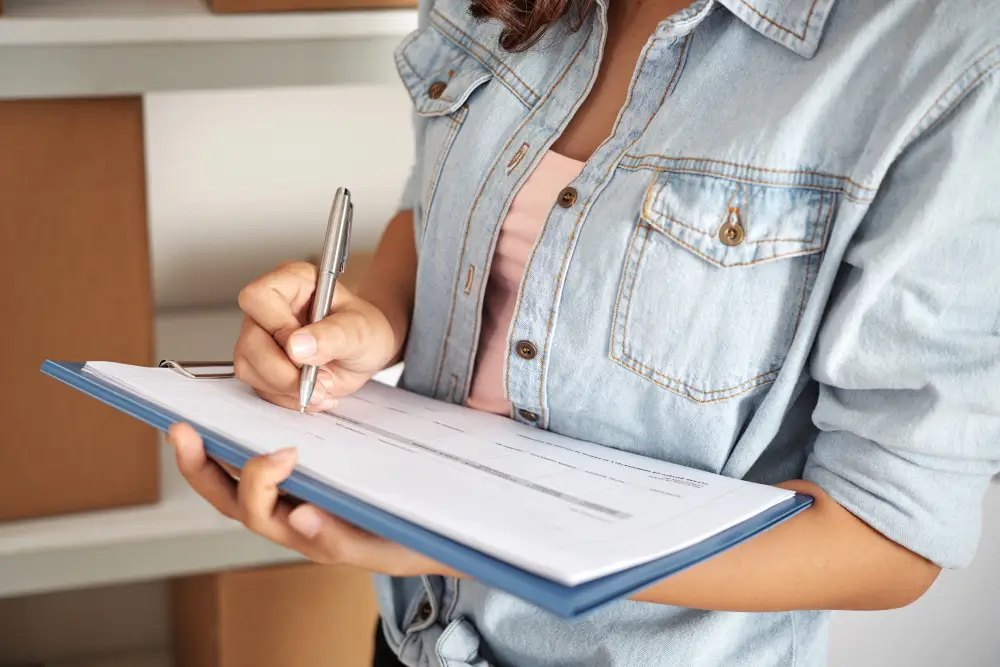Many landlords don’t fully grasp how essential regular inspections are to maintaining a well-run rental unit. From spotting early signs of damage to ensuring legal compliance with state laws, a structured rental property home inspection process helps you protect both your property and your peace of mind.
It’s more than just checking a few boxes — it’s about setting standards, avoiding surprises, and staying accountable.
Things can spiral fast without a clear inspection plan. It keeps your approach consistent, detailed, and legally sound — and every landlord should be using it, whether managing one home or an entire portfolio.
In this article, we’ll provide a checklist of what you must check for each type of inspection for your rental property.
Know the Inspection Process (and When to Do It)
Rental property home inspection happens at key points during a tenancy, each serving a different purpose:
1. Move-in Inspection
This sets the baseline for your rental unit’s condition before a new tenant arrives. It also helps avoid disagreements about security deposit deductions later on.
2. Routine Inspections
These should be scheduled throughout the lease to catch maintenance issues early and assess general property upkeep. Many rental property owners go with quarterly inspections for peace of mind.
3. Move-out Inspection
Once a tenant moves out, you’ll compare the condition of the unit to your original move-in notes and photos. A move-out inspection helps determine normal wear and tear versus actual damage.
Always provide proper notice following Florida’s state laws, no matter the inspection type. You’ll need to give adequate notice (usually 12 hours minimum), and it's a good idea to let tenants know what to expect beforehand.
A. What to Do Before You Inspect
Start with the lease agreement. Many tenancy agreements include language about inspections — when they can happen, what they cover, and how much notice is required. Be sure you’re sticking to the terms of your lease.
Next, prepare your checklist. A good rental inspection checklist should be tailored to your property and cover the basics like safety equipment, plumbing, structural elements, and cleanliness. Bringing a standardized form or app makes the process easier to document and organize.
You may also want to invite the tenant to be present. This keeps communication open and makes the process feel more collaborative.
B. The Move-In Checklist: First Impressions Matter
When a new tenant moves in, documenting the rental property's condition is crucial. At this stage, a rental property home inspection helps set expectations and provides clear evidence should a dispute arise later.
Here’s what to focus on:
- Floors, carpets, and walls
- Appliances and light fixtures
- Windows and doors
- Plumbing and electrical outlets
- Smoke and carbon monoxide detectors
- HVAC system and thermostat
- Any signs of pest infestation or water damage
Take clear, timestamped photos and store them with your inspection report. This step alone can prevent a lot of headaches down the road.
C. Routine Inspections: Catch Small Issues Before They Grow
Routine rental property home inspections help you stay on top of maintenance and ensure your rental unit remains in solid condition. These periodic inspections are usually non-invasive but should be thorough enough to catch any red flags.
Refer to this periodic rental property inspection checklist as a guide:
- Leaky faucets or signs of water damage
- Dirty air filters or HVAC concerns
- Appliances functioning properly
- Signs of unauthorized pets or alterations
- Normal wear and tear vs. excessive damage
Remember, the goal isn’t to play detective — it’s to ensure a safe living environment and maintain the property’s value. Keep it professional, respectful, and communicative.
D. The Move-Out Inspection: Closing the Loop
After your tenant has moved out and before you return the security deposit, conduct a thorough move-out rental property home inspection.
Here’s what you should include:
- Look for damage beyond normal wear and tear
- Check for personal belongings left behind
- Test smoke alarms and safety equipment
- Ensure cleanliness of kitchen, bathroom, and common areas
- Assess the property’s readiness for the next tenant
Compare this to your original move-in checklist to identify any issues that may justify deductions from the tenant’s security deposit. Document everything and provide an itemized report if deductions are made — this keeps things transparent and legally sound.
Florida-Specific Legal Reminders for Landlords
In Florida, landlords are required to give at least 12 hours' notice before entering a rental unit. This applies even to a rental property home inspection unless it’s an emergency.
It’s also your legal responsibility to maintain the property in a safe, habitable condition, which includes addressing maintenance issues promptly and complying with safety standards like working smoke detectors.
Always stay informed on current state and local laws. When in doubt, consult with a professional or let your property management team handle inspections for you.
Avoid These Common Inspection Mistakes
Even experienced landlords make missteps. Here’s a detailed checklist of common inspection mistakes that you must steer clear of:
- Skipping regular property inspections and missing early signs of damage
- Failing to document with photos or an inspection report
- Confusing normal wear and tear with actual property damage
- Forgetting to notify the tenant or showing up without proper notice
- Waiting until the lease ends to discover costly repairs
Being proactive and organized saves you money and stress. Every rental property home inspection is a chance to keep your real estate investment in great shape.
Take the Stress Out of Property Management with Professional Inspections
Inspections aren’t glamorous, but they’re one of the most important parts of owning a rental. They help you spot issues early, avoid nasty surprises, and keep your place in good shape. Done right, they protect your income and your reputation. Skip them, and you’re asking for trouble.
Still, staying on top of it all — move-ins, move-outs, maintenance, legal stuff — can burn you out fast. That’s where we come in. At Everest Property Management, our property managers help Florida landlords run smoother regular inspections without the headache. We do the heavy lifting so you can focus on the big picture.
Here’s what we handle:
- Move-in and move-out inspections, fully documented
- Routine property checkups
- Handling repairs and maintenance calls
- Notifying tenants the right way
- Screening, rent collection, and everything in between
If you’re tired of juggling it all yourself, let us take it off your plate. Check our Maintenance and Inspection page, and let’s make your upcoming inspections the easiest part of your rental game.
FAQS
What should I do if a tenant refuses to allow an inspection of the rental property?
If a tenant unreasonably denies access to a rental property inspection, it's considered a violation of Florida law. In such cases, you can issue a written notice, often referred to as a "7-Day Notice to Cure," informing the tenant of their non-compliance and providing them seven days to allow access. If the tenant continues to refuse, you may have grounds for eviction.
Can I enter the rental property without the tenant being present?
As a landlord in Florida, you can enter the property without the tenant's presence, provided you give the required notice and it's for a legitimate purpose, such as an inspection or repairs. The law mandates at least 12 hours' notice before entry.
Are there specific hours during which I can conduct inspections?
Florida law specifies that landlords should conduct inspections or repairs between 7:30 a.m. and 8:00 p.m. unless otherwise agreed upon. This timeframe is considered reasonable and helps ensure minimal disruption to the tenant's daily routine.
Related Articles
House Repairs: How Can Landlords Convince Tenants to Pay for Repairs?



 As a top producing Realtor and Property Manager; Terry specializes in sales, extensive construction homes, rentals, REO’s, short sales, and all aspects of Real Estate. After graduating the University of Michigan with a master in MBA, Terry continued his endeavor and now has over 15+ years of experience in the Real Estate world. If there is anything that has to do with Real Estate and sales, you can always be sure of Terry to provide important, specialized knowledge.
As a top producing Realtor and Property Manager; Terry specializes in sales, extensive construction homes, rentals, REO’s, short sales, and all aspects of Real Estate. After graduating the University of Michigan with a master in MBA, Terry continued his endeavor and now has over 15+ years of experience in the Real Estate world. If there is anything that has to do with Real Estate and sales, you can always be sure of Terry to provide important, specialized knowledge.




